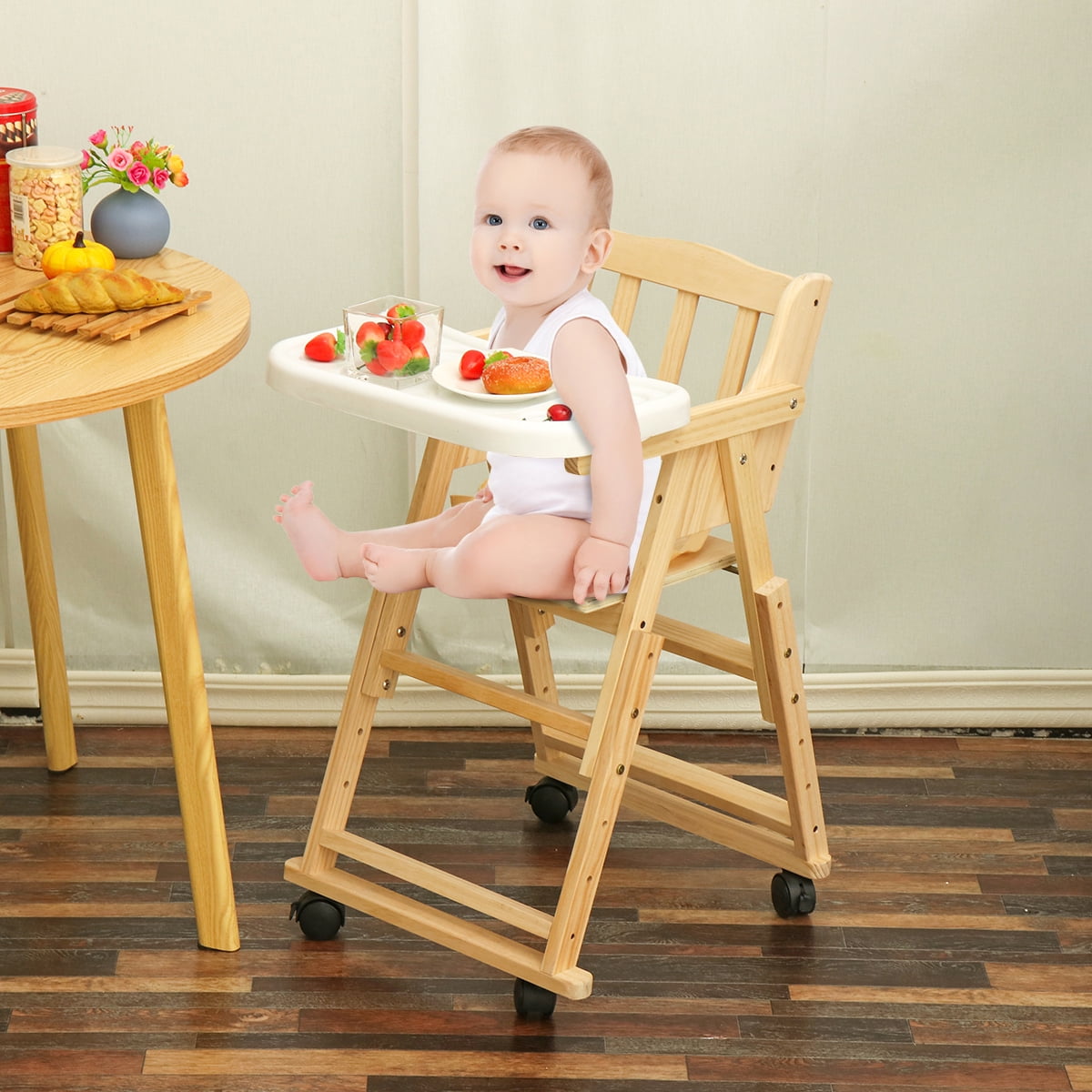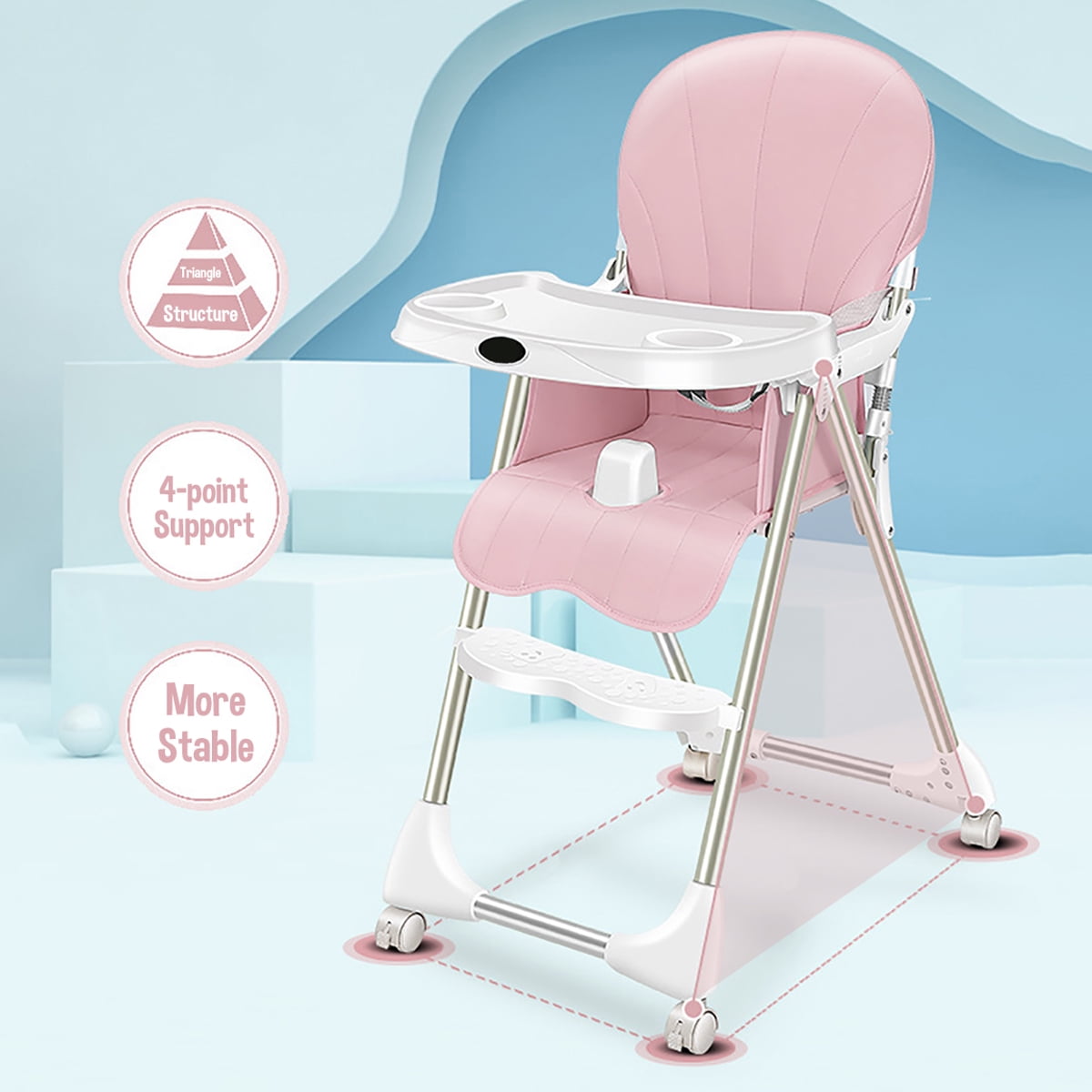Preparing for the Meal

Mealtime is a special time for bonding with your baby, and it’s important to create a safe and comfortable environment for both of you. As your baby grows, so does their need for a sturdy and supportive high chair that adapts to their development.
Choosing the Right High Chair
Choosing the right high chair is crucial for your baby’s safety and comfort. Consider your baby’s age and development stage when selecting a high chair. For infants, a high chair with a reclined seat and a five-point harness is ideal. As your baby grows, you can transition to a high chair with a removable tray and adjustable height.
Safety Features to Look for in a High Chair, Feeding baby in high chair
Safety should always be your top priority when selecting a high chair. Look for high chairs with these essential features:
- Five-point harness: This type of harness secures your baby in the chair, preventing them from falling out.
- Stable base: A wide base ensures the high chair won’t tip over easily.
- Adjustable height: This feature allows you to adjust the chair’s height to match your table, making feeding easier.
- Removable tray: A removable tray allows for easy cleaning and can be adjusted to accommodate your baby’s growth.
Securing Your Baby in the High Chair
Properly securing your baby in the high chair is essential for their safety. Follow these steps:
- Adjust the harness: Make sure the harness is snug but not too tight. Your baby should be able to move their arms and legs comfortably.
- Secure the buckle: Ensure the buckle is securely fastened.
- Check for tightness: After securing the harness, check for any loose straps or buckles.
Creating a Comfortable and Safe Feeding Environment
Creating a comfortable and safe feeding environment is crucial for your baby’s well-being.
- Choose a well-lit area: This will make it easier for you to see your baby and ensure they are comfortable.
- Keep the area clean: Clean the high chair and surrounding area before and after each meal.
- Provide a comfortable seat: Make sure the high chair is at the right height and that the seat is comfortable for your baby.
- Avoid distractions: Keep the feeding area free from distractions, such as toys or other children.
Essential Items for Feeding in a High Chair
Here are some essential items you’ll need for feeding your baby in a high chair:
- Bibs: Bibs help protect your baby’s clothes from food spills.
- Bowls: Choose bowls with a non-slip base to prevent spills.
- Spoons: Opt for spoons with soft tips that are easy for your baby to grasp.
- Wipes: Wipes are essential for cleaning up spills and messes.
Feeding Techniques

As your baby grows and develops, so too will their feeding needs. This section will guide you through various feeding techniques for different age groups, emphasizing the importance of introducing new foods gradually and observing for any allergic reactions. It will also provide information on appropriate food textures and consistencies for different developmental stages, along with a sample meal plan for a baby starting solid foods.
Spoon Feeding
Spoon feeding is a common technique for introducing solid foods to babies. It allows for controlled portions and ensures that your baby is receiving enough food.
- Start with small amounts of food and gradually increase the quantity as your baby gets used to it.
- Use a soft, small spoon with a rounded tip to avoid scratching your baby’s mouth.
- Offer the food slowly, allowing your baby to chew and swallow before offering more.
- Be patient and encouraging, and don’t force your baby to eat if they’re not interested.
Finger Foods
Finger foods are great for promoting self-feeding and developing fine motor skills. They are also a fun and engaging way for babies to explore different textures and flavors.
- Start with soft, easily digestible finger foods like cooked vegetables, fruits, and soft breadsticks.
- Cut food into small, bite-sized pieces to prevent choking hazards.
- Supervise your baby closely while they are eating finger foods.
- Encourage your baby to pick up the food themselves and bring it to their mouth.
Introducing New Foods
It is crucial to introduce new foods gradually to allow your baby’s digestive system to adjust and to identify any potential allergies.
- Start with one new food at a time and wait a few days before introducing another.
- Offer a small amount of the new food and observe your baby for any signs of allergic reactions, such as rash, vomiting, or diarrhea.
- If you notice any allergic reactions, stop feeding the food and consult your pediatrician.
Food Textures and Consistencies
The texture and consistency of food should be adjusted based on your baby’s age and developmental stage.
- For babies starting solid foods (around 6 months), start with purees and gradually move to mashed foods.
- As your baby develops their chewing abilities, you can introduce soft, chopped foods, then eventually finger foods.
- It’s essential to ensure that the food is soft enough for your baby to chew and swallow safely.
Sample Meal Plan
Here’s a sample meal plan for a baby starting solid foods:
Breakfast
- Oatmeal with fruit puree
- Yogurt with mashed banana
- Scrambled eggs with toast
Lunch
- Mashed sweet potato with chicken
- Lentil soup with whole-wheat bread
- Pasta with tomato sauce and ground beef
Dinner
- Steamed vegetables with salmon
- Chicken and vegetable stew
- Quinoa with black beans and corn
Snacks
- Fruit slices
- Cooked vegetables
- Yogurt
Encouraging Independent Eating
Encourage your baby to eat independently by providing them with opportunities to self-feed.
- Offer finger foods and let your baby explore different textures and flavors.
- Use a high chair with a tray to provide a stable surface for your baby to eat on.
- Be patient and supportive, and don’t get discouraged if your baby makes a mess.
- Encourage your baby to use their hands and utensils to pick up and eat their food.
Managing Messes and Mealtime Challenges: Feeding Baby In High Chair

Feeding a baby in a high chair can be a messy and challenging experience, but it’s also an important milestone in their development. As your little one learns to eat independently, you’ll encounter various hurdles, from food refusal to the inevitable splatters and spills.
Cleaning Up After Mealtime
Maintaining a clean environment during mealtime is crucial for both the baby and the parent. Various methods can be employed to minimize the mess and simplify cleanup.
- Bibs: Bibs are essential for catching food dribbles and spills. Choose bibs made from waterproof material, with a pocket or a catch-all feature to contain the mess.
- Placemats: Placemats provide a designated area for the baby’s food and help prevent spills from reaching the high chair’s surface. Opt for washable and easily cleaned placemats, such as silicone or vinyl.
- High Chair Covers: High chair covers protect the chair from stains and spills, making cleanup a breeze. Removable and washable covers are ideal, offering easy maintenance.
Food Refusal and Encouraging Healthy Eating Habits
Food refusal is common in babies and toddlers. It’s often a phase, and it’s important to handle it with patience and consistency.
- Offer a Variety of Foods: Introduce new foods gradually and repeatedly, offering them alongside familiar favorites. Be patient; it may take multiple exposures for your baby to accept a new food.
- Avoid Power Struggles: Instead of forcing your baby to eat, focus on creating a positive mealtime experience. Let them explore food with their hands, and don’t make a big deal if they refuse something.
- Model Healthy Eating: Children learn by observing their parents. Make healthy eating a family affair and show your baby that you enjoy nutritious meals.
Age-Appropriate Food Textures and Choking Hazards
As babies grow, their ability to chew and swallow develops. It’s crucial to offer age-appropriate food textures to minimize the risk of choking.
| Age | Food Textures | Choking Hazards |
|---|---|---|
| 6-8 months | Soft, mashed, or pureed foods (e.g., mashed bananas, avocado, cooked vegetables) | Hard, round foods (e.g., grapes, cherries, hard candies) |
| 9-12 months | Finger foods (e.g., soft cooked pasta, steamed vegetables, small pieces of cooked chicken) | Sticky foods (e.g., peanut butter, marshmallows), hard, tough foods (e.g., raw carrots, jerky) |
| 12-18 months | Larger pieces of soft foods (e.g., diced fruits, cooked vegetables, small pieces of meat) | Tough, chewy foods (e.g., raw vegetables, tough meat), small, hard foods (e.g., popcorn, nuts) |
Positive Reinforcement and Avoiding Power Struggles
Mealtimes should be enjoyable for both you and your baby. Positive reinforcement can encourage healthy eating habits.
“Avoid power struggles and focus on creating a positive mealtime environment.”
Feeding baby in high chair – Feeding a baby in a high chair can be a messy, but rewarding, experience. The boon flair high chair red is a stylish and functional choice that can help to make mealtimes easier for both parent and child. With its adjustable height and easy-to-clean design, this high chair can accommodate a growing baby and make feeding a more enjoyable experience for everyone.
Feeding a baby in a high chair can be a fun and engaging experience, allowing them to participate in family mealtimes. However, it’s crucial to ensure the baby is developmentally ready for this transition. When can babies sit on a high chair is a question that many parents have, and the answer typically lies around the age of six months when they can sit up independently with good head control.
Once your baby reaches this milestone, you can introduce the high chair gradually, starting with short sessions and increasing the duration as they become accustomed to it.
